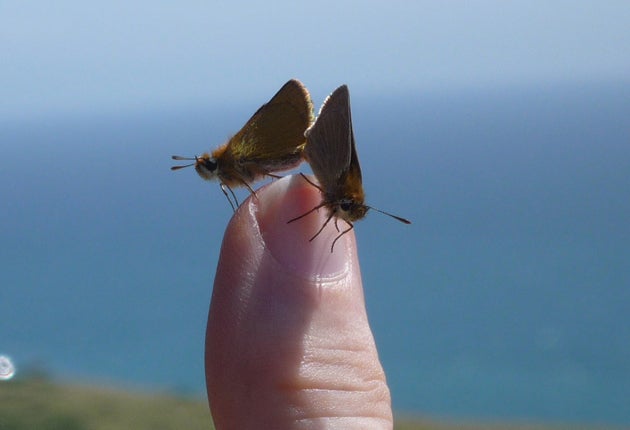A billion painted lady butterflies make for a record summer
The Independent's Butterfly Hunt boosted by sighting of Lulworth skipper

Your support helps us to tell the story
From reproductive rights to climate change to Big Tech, The Independent is on the ground when the story is developing. Whether it's investigating the financials of Elon Musk's pro-Trump PAC or producing our latest documentary, 'The A Word', which shines a light on the American women fighting for reproductive rights, we know how important it is to parse out the facts from the messaging.
At such a critical moment in US history, we need reporters on the ground. Your donation allows us to keep sending journalists to speak to both sides of the story.
The Independent is trusted by Americans across the entire political spectrum. And unlike many other quality news outlets, we choose not to lock Americans out of our reporting and analysis with paywalls. We believe quality journalism should be available to everyone, paid for by those who can afford it.
Your support makes all the difference.The Independent's Great British Butterfly Hunt reaches a climax today in the middle of one of Britain's most extraordinary butterfly summers – with a billion butterflies of one species about to take wing.
That is how many painted ladies are expected to be in the air across the country in the next couple of weeks, after the greatest ever invasion of the handsome, salmon-pink migratory species from North Africa at the end of May.
In a phenomenal population movement, up to 20 million individual butterflies are thought to have poured into Britain in the space of a few days, to lay their eggs on thistles from the south coast to Scotland – and now their multiple offspring, having gone through the stages of egg, caterpillar and chrysalis, are about to fly.
According to the charity Butterfly Conservation, there may be a billion of them, presenting people with the chance to spot butterflies in greater numbers than have been seen in Britain for years. Today, this newspaper is publishing Butterfly Summer, a comprehensive free guide to all 58 of Britain's butterfly species.
We had intended to publish this at the end of the hunt – when we had seen and reported on all 58. We haven't quite got there yet: with the sighting of the Lulworth skipper at Lulworth Cove in Dorset on Thursday, our total reached 52. But of the six remaining species, three are not on the wing before August – the silver-spotted skipper, the Scotch argus and the brown hairstreak – so that might have meant waiting until September for a full catalogue.
As the best time of the year to see many species – especially those which come into gardens, such as the red admiral, peacock and small tortoiseshell, – is over the next month, we are publishing our free 24-page guide today.
Next month, we will give details on how readers who have been carrying out their own butterfly hunts can enter our competition for seeing the most British species in a summer. The prize, you may remember, is a safari with Butterfly Conservation and The Independent to find the final species of the year to emerge, the brown hairstreak, beautiful but elusive.
The Independent's own total went from 48 to 52 on Thursday during a trip to Dorset in the expert company of Butterfly Conservation's chief executive, Dr Martin Warren. Our first success was to find the remaining three species of the blue family – the silver-studded blue, the chalkhill blue, and the brown argus (which is technically a blue despite its brown wings). To find Dorset's own butterfly, the tiny Lulworth skipper – found nowhere else in Britain – we trekked up on to the downs above the eponymous Cove, crowded with holidaymakers on a beautifully clear day.
Eventually, we came across one in the clumps of tor grass on the clifftop, and then we found a mating pair, so involved with each other that they could be gently picked up and placed on the top of your corresponden's finger, as the above picture shows.
As well as the three August species mentioned above, we are still seeking the rare and delicate wood white, the Essex skipper and the clouded yellow. Alongside the painted lady, this last is the other migrant in our 58 native species, and finding it will depend to some extent on chance. Finding the painted lady, however, is unlikley to be a chancey business this year – not with a billion of them about to emerge.
Join our commenting forum
Join thought-provoking conversations, follow other Independent readers and see their replies
Comments